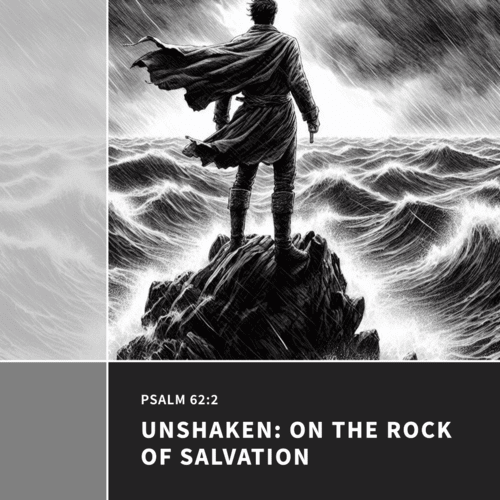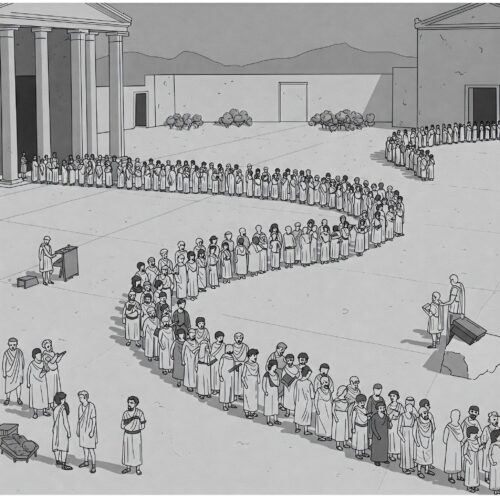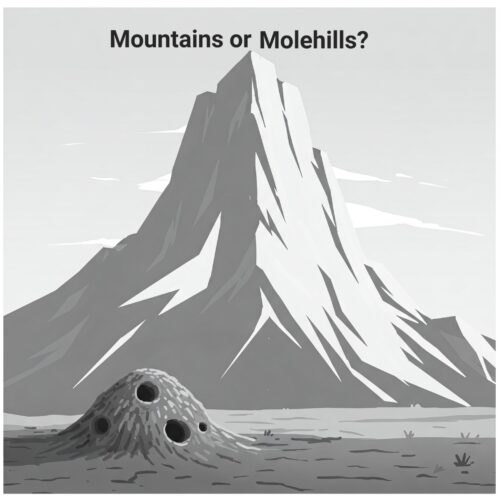Validating Bible History: Archaeological Finds in Judah
For centuries, Bible accounts of the Kingdom of Judah were considered primarily as matters of faith. Today, however, the archaeologist’s spade continues to unearth compelling evidence that aligns with scriptural narratives. Recent discoveries across the landscapes of ancient Judah have provided remarkable insights into this pivotal kingdom’s very real history.
THE HISTORICAL CONTEXT OF JUDAH
The Kingdom of Judah emerged around 930 BCE following the split from the northern Kingdom of Israel after Solomon’s reign. Centred around Jerusalem, this southern kingdom endured until the Babylonian conquest in 586 BC. Throughout its approximately 350-year history, Judah maintained the Davidic dynasty and served as the centre of worship at the Jerusalem Temple.
KEY ARCHAEOLOGICAL FINDS IN JUDAH
The House of David Inscription (Tel Dan Stele): Perhaps the most significant archaeological validation comes from the Tel Dan Stele, discovered in 1993-94. This 9th-century BC Aramaic inscription contains the phrase “House of David”, providing the first clear extra-biblical evidence for the Davidic dynasty. This remarkable find shattered previous scholarly claims that King David was merely a mythical figure. The find confirmed the Davidic royal line was recognised even by neighbouring kingdoms.
Seal Impressions and Bullae: In 2015, archaeologists unearthed a clay seal impression (bulla) bearing the name of King Hezekiah of Judah. It read “Belonging to Hezekiah, son of Ahaz, King of Judah.” The royal seal, complete with winged sun disk imagery, directly connects to the biblical king who reigned around 715-686 BC.
Even more compelling are the discoveries of bullae belonging to biblical officials. Excavations in Jerusalem’s City of David yielded seal impressions belonging to “Jehucal son of Shelemiah” and “Gedaliah son of Pashhur”—two officials specifically named in Jeremiah 38:1. The recovery of these tiny artefacts provides extraordinary confirmation of seemingly minor biblical details.
The City of David Excavations: Ongoing excavations in Jerusalem’s oldest section continue to reveal evidence of the Davidic capital. The massive Stepped Stone Structure, dating to the 10th century BC, likely supported a significant royal building mentioned in biblical texts. Nearby, archaeologists have uncovered monumental fortifications and administrative structures that align with Jerusalem’s status as a royal capital.
Recent discoveries in the Givati Parking Lot excavations revealed a large public building destroyed during the Babylonian conquest, with layers of ash and arrowheads matching the biblical account of Jerusalem’s fall in 586 BC.
Khirbet Qeiyafa’s Fortified City: Excavations at Khirbet Qeiyafa, overlooking the Valley of Elah (famously where David fought Goliath), uncovered a massively fortified city dating precisely to the early 10th century BC—the time of David and Solomon. This discovery challenges scholarly claims that Judah lacked urban development during this period.
The site yielded ritual objects that differ markedly from Philistine and Canaanite items, suggesting distinct Judaic religious practices. An inscribed ostracon (pottery fragment) from the site contains Hebrew writing, indicating literacy existed during this early period.
The Lachish Letters: Discovered in the 1930s but continuously studied, the Lachish Letters provide a haunting glimpse into Judah’s final days. These ostraca, written by a military officer to his commander during Nebuchadnezzar’s invasion (around 588 BC), mention “the prophet” and signal towers, demonstrating remarkable consistency with Jeremiah’s account of this period.
One letter concludes with: “May YHWH cause my lord to hear good news this very day!”—showing the enduring faith even during catastrophic national events.
CONCLUSION: ARCHAEOLOGICAL FINDS IN JUDAH
Archaeological discoveries across ancient Judah continue to provide remarkable correlation with Bible narratives. From tiny seal impressions bearing the names of biblical figures to massive fortifications testifying to royal power, the material evidence grows yearly. While archaeology cannot prove every aspect of faith, it increasingly demonstrates the Kingdom of Judah described in Scripture was no mere literary creation but a historical reality whose traces continue to emerge from the soil of the Holy Land.
As research continues, new technologies and methodologies promise even greater insights into this pivotal kingdom that sits at the heart of Bible history. The stones themselves are indeed crying out, confirming what many have long believed through faith.
RECOMMENDED RESOURCES:
- Mazar, Amihai. Archaeology of the Land of the Bible
- Finkelstein, Israel and Neil Asher Silberman. David and Solomon
- Dever, William G What Did the Biblical Writers Know and When Did They Know It?
- Biblical Archaeology Society (www.biblicalarchaeology.org)
- Associates for Biblical Research (www.biblearchaeology.org)
ARCHAEOLOGICAL FINDS IN JUDAH: RELATED FAQs
How do archaeologists date artefacts from ancient Judah? Archaeologists use multiple dating methods including radiocarbon (C14) dating of organic materials, pottery typology (examining the styles and manufacturing techniques), and stratigraphy (studying the layers of earth in which objects are found). They also correlate findings with known historical events like the Babylonian conquest of 586 BC, which left distinctive destruction layers at multiple sites.
- Has archaeology found evidence of Solomon’s Temple? Direct excavation of the Temple Mount is not possible due to religious and political sensitivities. Physical remains of Solomon’s Temple have, therefore, not been found. However, archaeologists have discovered Temple-related artefacts including a pomegranate ivory sceptre head inscribed “Belonging to the Temple of YHWH,” and architectural elements from the royal building complex that likely surrounded the Temple.
- What evidence exists for everyday religious practices in Judah? Numerous household shrines and figurines (particularly female “pillar figurines”) suggest some Judahites practiced forms of folk religion alongside official Temple worship. Excavations have also uncovered small stone altars, ritual baths (mikvaot), and the absence of pig bones in food remains, indicating dietary restrictions consistent with biblical laws were observed in many Judahite communities.
- How did writing and literacy develop in ancient Judah? Archaeological evidence reveals Judah had a developed writing tradition by the 8th-7th centuries BC, with inscriptions found on pottery, stone, and seals. The Khirbet Qeiyafa ostracon suggests literacy existed even in the 10th century BC, while administrative centres contained archives of written documents, demonstrating that literacy extended beyond scribal elites to military commanders and local officials.
- What evidence exists for trade networks connecting Judah to other nations? Excavations have uncovered imported pottery from Cyprus and Egypt, luxury goods from Phoenicia, and specialised items like frankincense from Arabia at various Judahite sites. Judahite storage jars stamped with “LMLK” (meaning “belonging to the king”) have been found throughout the kingdom, indicating an administrative system for distributing agricultural products, while scale weights conforming to known ancient standards demonstrate regulated commercial activity.
- How did Judahite material culture differ from surrounding peoples? Archaeological evidence shows distinct Judahite characteristics including unique four-room house architecture, the absence of pig bones in food remains, and local pottery styles. Religious practices appear more aniconic (avoiding divine images) compared to neighbouring cultures, with fewer cultic figurines than found in Philistine or Northern Kingdom sites, suggesting stricter adherence to prohibitions against idolatry.
What technologies were available to the Kingdom of Judah? Archaeological finds demonstrate Judahites had mastered sophisticated water management systems, exemplified by Hezekiah’s Tunnel and numerous cisterns and reservoirs throughout the kingdom. Evidence of metallurgical workshops shows advanced bronze and iron working capabilities, while agricultural technologies included terraced farming, oil and wine presses, and irrigation systems that enabled the kingdom to flourish despite challenging terrain.
ARCHAEOLOGICAL FINDS IN JUDAH: OUR RELATED POSTS
- Truth to the Test: Can Geography Validate Bible Accounts?
- Hezekiah’s Reforms: Lachish Discoveries Confirm Bible Account
- Bible Accounts of Ancient Trade: Archaeological Evidence
- Historical Reliability of the Bible: Astonishing Archaeological Finds
- Archaeological Finds Validate Bible: Unearthing Biblical Truth
- Archaeology Endorses Scripture: Papyri and Dead Sea Scrolls
Editor's Pick

Satan’s Lie Exposed: Is God Egotistical To Demand Our Worship?
Satan first planted this destructive seed of doubt back in the garden of Eden. His original lie, whispered to Eve [...]

Living With Biblical Integrity: Puritan Wisdom For Our Times
Picture for a moment the desk of a Puritan divine: a worn Bible, carefully annotated; a journal recording daily self-examination; [...]
What Does it Mean to Love Jesus More than Family? The Surprise Answer…
In Matthew 10:37, Jesus makes one of His most challenging statements: "Anyone who loves their father or mother more than [...]

Meeting Jesus in Glory: Will He Have a Physical Body?
It’s a question we’ve all thought of at some point: What exactly will we see when we finally meet Jesus? [...]

The God Equation: Quantum Physics and the Evidence for Design
Quantum Physics and the Evidence for Design Few areas of science are as intriguing—even perplexing—as quantum mechanics. It explores the [...]
Does Math Reveal the Mind of God? The Divine Design in Numbers
When Galileo declared mathematics is the language in which God wrote the universe, was he merely waxing poetic? Consider this: [...]

What Does It Mean To Be God’s Temple?—A Biblical Deepdive
The magnificent temples of the ancient world stood as monuments to divine presence—grand structures of stone and gold where heaven [...]

Trinity in the Old Testament: Hidden, Yet Always in Plain Sight
The doctrine of the Trinity often raises a compelling question among Bible readers: why isn't this fundamental Christian truth clearly [...]

Assurance of Salvation: Can I Really Know I’m Saved?
Assurance of Salvation: The Believer's Anchor in the Storms of Life Imagine we each possess a treasure so precious it [...]

Unrivalled: What Christ Offers You That No One Else Can
Where Christ Offers to Take You: From Death Row to Total Freedom Consider with us the surpassing worth of [...]
SUPPORT US:
Feel the Holy Spirit's gentle nudge to partner with us?
Donate Online:
Account Name: TRUTHS TO DIE FOR FOUNDATION
Account Number: 10243565459
Bank IFSC: IDFB0043391
Bank Name: IDFC FIRST BANK








